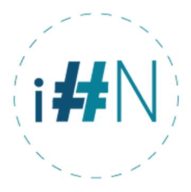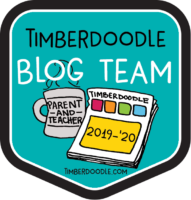This guide is published by Memoria Press and is targeted for the 6th-8th grader. I am using it with an 8th grader. The novel Anne of Green Gables does contain Biblical references if you are a secular homeschooler and are comfortable with using the novel in your homeschool than this study guide should also be a good fit. (It is not preachy in any way and focuses on helping the student understand the story.) I received a free copy of this product in exchange for an honest review.
What My 8th Grader Thought
My 8th-grade daughter spent several months wanting to read Anne of Green Gables but just not quite being able to get through it. When I saw this guide I thought is might be just what she needed.
After using the guide for the last month, she is finally making progress with the novel. When I asked her what she thought of the guide she said she liked it.
Then she said, “It helps me understand the story. Before when I was reading the book I kept getting lost, but now I understand it.”
That is probably all you need know…when a student says things like that you know you have hit curriculum gold. But you can keep reading the review if you want to find out what mom thinks.
Helping the child understand the story should be the point of any study guide. To help them enter the world of the story. While a study guide is not necessary for every book they read, it is especially helpful for understanding books that were not written recently.
The vocabulary of older books is not only much more extensive than modern works but the way of life was different, sayings and expressions were different, and some words were commonly used in a way that is different than how we use the same word today. A study guide can help immensely in these situations and it is well worth the effort on the part of the student to read and understand these older novels. When they do they enter rich worlds and beautiful writing.
This guide is simple, easy-to-use and well-organized.
There is a lesson for each chapter of the book. Each lesson includes the following sections.
Reading Notes
These are for you to read with your student before they read the chapter in the book. These notes go over language, people, or concepts the child may not already be familiar with. This is to increase their comprehension when they read the chapters.
A few samples from this section; Bonny- Anne’s name for the apple scented geranium, fortnight - A period of 14 days, Mrs. Rachel Lynde- the town gossip; lives next door to the Cuthberts, this section will only take a couple of minutes but will help your child greatly in understanding the book.
Vocabulary
The vocabulary section will present a word used in the book in context, with the vocab word in bold. The students think about the meaning of the word, as it is used, and come up with a synonym for the word. They then write the synonym on the line.
The instructions at the beginning of the book note that the synonym should be a word the child is already familiar with. This is very important for the brain. Connecting the new word with a familiar word will help their brain know where to store this new information, increasing the likelihood that they remember it later.
Comprehension Questions
These questions are to be completed after the student reads the chapter. This is a chance to have your child practice good composition skills. Make sure they self-edit their sentences before they give them to you to look over. It may help to give them a self-editing checklist if there are some things they forget frequently.
You can also keep a list of mis-spellings and spend some time on those words during your spelling lessons.
Thinking through these answers and then being able to organize their thoughts into a complete sentence helps your student practice a great number of worthwhile skills.
Expressions for Discussion
Your middle schooler may be working through the rest of the lesson and reading the book independently, but for this section, you want to join them.
This is a great time to make sure your student understands the language being used in the novel. It also opens the door to think about why a character would have a particular wish or opinion. It is helpful if you have read the book at some point in your life. If you have never read the book don’t hesitate to either read it alongside your child or even read it aloud together.
Enrichment
This section has a variety of suggestions and different types of assignments. Some suggestions point to further research related to the book, drawing, finding places on a map, and additional composition assignments. The assignments here will also cover literary devices and occasionally include memory work.
Appendix of Literary References
In the back of the study guide, there is an appendix with sections of different literature which are referenced in Anne of Green Gables. The enrichment section will sometimes have the student read those selections.
What Did I Think?
Honestly, I wish I had tried one of these guides sooner. But the idea of literature guides has always made me a little squeamish. Perhaps that is only because of a lack of quality in the guides I had to slog through as a child, or maybe I just kept coming across poorly written guides. I don’t want to zap the joy out of a story with a literature guide and too many guides seemed to turn literature into a boring drill. I found that to be far from the case with this guide by Memoria Press.
This guide is written artfully to pull the child deeper into the story and give them even more joy as they are able to understand and experience the story on an even deeper level.
I think these guides effectively keep in mind all the principals of brain science I have written about on my blog.


